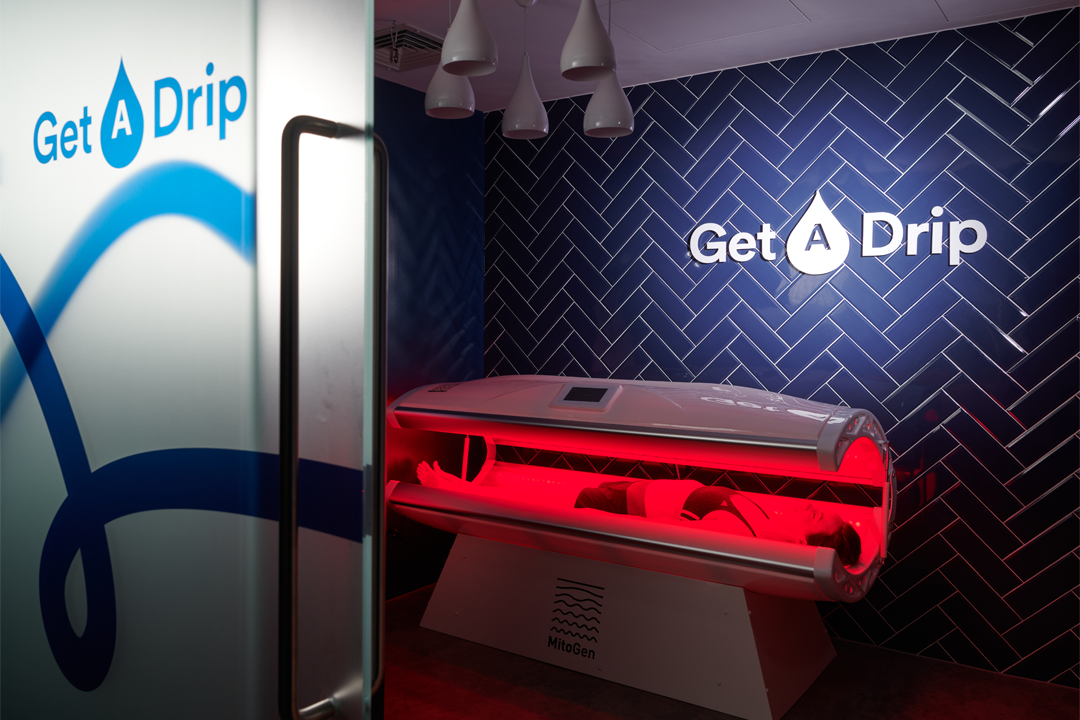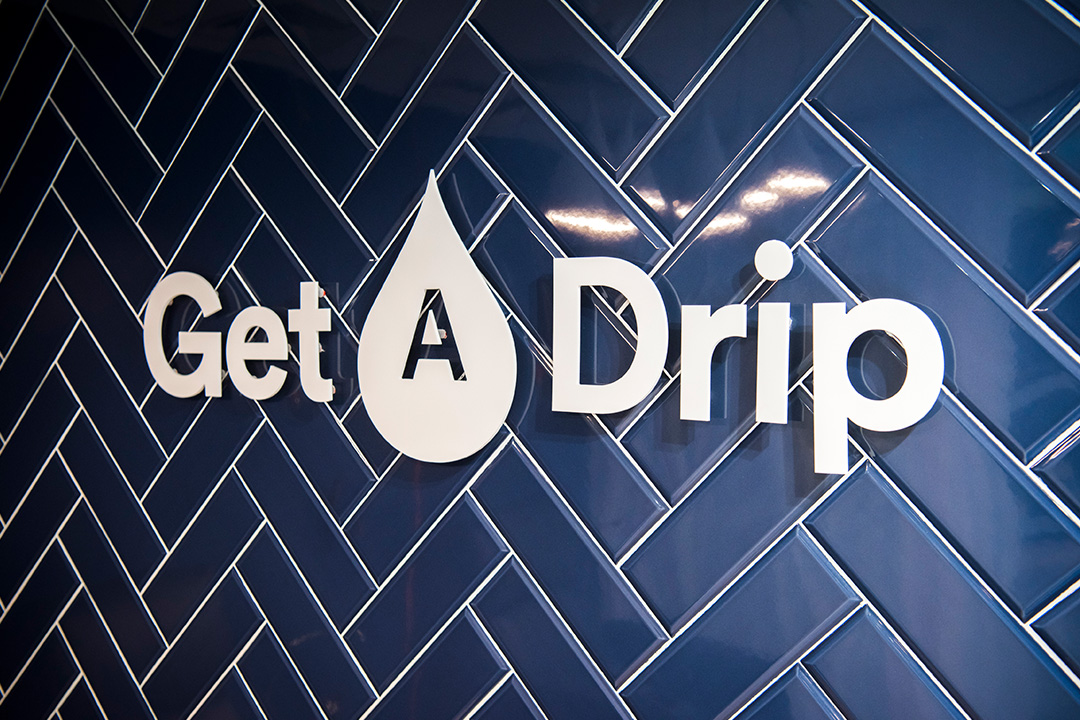How Does Photobiomodulation / Red Light Therapy Work?
Red Light Therapy (also known by its scientific name, ‘photobiomodulation’ or PBM) is a therapeutic, non-invasive treatment that uses low wavelength red light that exposes you to low levels of red or near-infrared light.
Our Red Light Therapy bed offers full body exposure that can aid you from the inside-out! With more effective production of ATP energy, our cells experience a more rapid turnover rate which can aid in the appearance of acne, age spots and facial texture.
Please note, sessions are 12 minutes (Canary Wharf Clinic) and 22 minutes (King’s Road).

Book Your First Red Light Therapy Appointment!
- Red Light Therapy (PBM) sessions starting from just £55!
- Available at our Canary Wharf & King’s Road clinic
- Treatment times can vary for each client depending on the body’s response from therapy.
- At Canary Wharf, the clinician may advise to start with the minimum duration of 6 minutes to reduce potential side effects. Red Light Therapy provides far and near infrared light which stimulates the deeper level of the mitochondria.
Photobiomodulation Prices & Packages
Enjoy 30% Off All Packages!
Red Light Therapy Treatment Courses
| Treatment Course | Price |
|---|---|
| 1 x Session | |
| 5 x Sessions | |
| 10 x Sessions | 20 x Sessions |
Please note, each session will last 12 (Canary Wharf) or 22 minutes (King’s Road).
Benefits of Photobiomodulation (PBM/Red Light Therapy)
The applications of Photobiomodulation (PBM / Red Light Therapy) are extremely diverse, and offer many benefits to you and your skin!
Repairs damage from the sun and reduces wrinkles
Speeds muscle recovery and enhance peak performance
Heals acne and blemishes
Fades scars and stretch marks
Aids in faster wound healing
Reduces joint inflammation
Can boost testosterone levels
Aids in recovery of hyperthyroidism
Enhances collagen synthesis and repair
Restores mitochondrial oxidation and energy production
How does Photobiomodulation / Red Light Therapy work?
In order for our bodies to carry out cellular processes, and to produce a biochemical effect to create energy, our bodies need sunlight. However, sunlight produces Ultraviolet (UV) waves that can be damaging to our bodies and can result in long-term illnesses. Red Light Therapy is a great alternative as it is similar to the light your body receives from natural sunlight, but does not emit the harmful UV rays that cause sun damage.
All sessions are 22 minutes long.

Frequently Asked Questions
What is Photobiomodulation (PBM / Red Light Therapy)?
Photobiomodulation Therapy (PBM), is a therapeutic, non-invasive treatment that uses low wavelength red light that exposes you to low levels of red and near-infrared light. In order for our bodies to carry out cellular processes, and to produce a biochemical effect to create energy, our bodies need sunlight. However, sunlight produces Ultraviolet (UV) waves that can be damaging to our bodies and can result in long-term illnesses. Photobiomodulation is a great alternative as it is similar to the light your body receives from natural sunlight, however, it omits the harmful UV rays that cause sun damage.
How long does PBM take?
You can undergo PBM in 12 minute (Canary Wharf) or 22 minute (King’s Road) sessions, 3-5 times a week. Due to its non-invasive nature, you can undergo PBM as many months as you would like to receive treatment, however, we do recommend up to four months.
The session duration is dependent on machine irradiance.
What are the benefits of PBM?
Benefits include:
- Greater levels of ATP energy production
- Repair damage from the sun and reduce wrinkles
- Heal acne and blemishes
- Fade scars and stretch marks
- Reduce joint inflammation
- Aid recovery in hyperthyroidism
- Enhance collagen synthesis and repair
Who can benefit from PBM?
Due to its non-invasive nature, anyone can benefit from PBM. PBM may be beneficial to those who suffer from skin conditions such as psoriasis, rosacea and eczema. PBM may also be beneficial to athletes due to its ability to reduce joint inflammation.
How soon after the service will I feel the effects?
Every individual may respond differently to specific treatments and results will also depend on the goal you want to achieve.
How often should I have PBM?
You can undergo PBM as often as you would like to receive treatment. However, we do recommend treatment 3-5 times a week up to four months.
Can I wear makeup in the Red Light Therapy bed?
Yes, makeup can be worn and should not affect the performance of the therapy
Can I wear my clothes in the Red Light Therapy bed or should I be nude?
The skin that you wish to be treated should be fully exposed to the light
Will the treatment interfere with or be affected by any medications I use?
If you use medications such as Tetracycline, Digoxin (used for heart irregularities) and photosensitising drugs (e.g., tranquillisers, sulfa drugs, oral anti-diabetic drugs, antidepressants, and steroids), please consult your physician before using Red Light.
Are there any special creams or lotions I am supposed to use during or after treatment?
No, there are no special creams or lotions that need to be used before, during or after treatment
Will Red Light help with Seasonal Affective Disorder (SAD)?
Red Light, as well as other light therapies, has been proven to improve Seasonal Affective Disorder (SAD)
How warm does the Red Light Therapy bed get?
The feeling of the heat has been compared to a nice warm 25 degree day (not actual temperature of room). We do have air conditioning in the clinic to keep you at a comfortable temperature
How long after the previous user do I have to wait to use the Red Light bed?
We tend to schedule 30 minutes between appointments so that we can allow the bed to cool down (not required) for the next user’s comfort.
Is it okay to wear contacts while in the PBM Bed?
This depends on the individual – some people may experience a dry eye sensation.
Do I need to wear some sort of eye protection (similar to tanning goggles)?
Eye protection is not necessary. However, the lights are very bright and may be uncomfortable for some individuals with particular sensitivities to light.
Is Red Light Therapy similar to tanning?
No, not at all. You will not get a tan from Red Light Therapy, nor does it expose you to damaging UV rays.
Will I have to do this indefinitely to maintain results?
Yes, it is recommended to start with a commitment of 20 minutes 3-5 times per week for the first 1-4 weeks, then 2-3 times per week for the following 4-12 weeks, and finally 1-2 times per week to maintain results
Can I have PBM alongside other Get A Drip services?
Of course! PBM is an effective complementary therapy that can be used alongside our other services, including IV Vitamin Drips, Ozone Therapy, and our upcoming Cryotherapy. For bespoke recommendations, please speak to one of our in-clinic staff, or book your free consultation today.
Can I have PBM if I am pregnant?
Get A Drip does not provide PBM services for pregnant people.
Is PBM painful?
No, PBM is completely non-invasive and pain-free. In fact, it provides relief for both acute and chronic pain!
Is PBM safe?
Our state of the art Red Light Pod is completely safe and has no negative side effects, providing there are no contraindications present.
Are there any negative side effects?
Get A Drip’s PBM does not cause any negative side effects, providing there are no contraindications present.
Which Get A Drip clinics offer Photobiomodulation (PBM / Red Light Therapy)?
PBM is currently available at our Canary Wharf clinic and our King’s Road clinic.
Celebrities who have been known to have PBM
- Gabrielle Union (article here)
- Debby Ryan (article here)
- Jenna Dewan
- Gal Gadot
- Suki Waterhouse
- Renée Zellweger
- Emma Stone
- Chrissy Teigen
- Kourtney Kardashian
Relevant Articles
- https://poosh.com/benefits-infrared-heat-red-light-therapy/
- https://sg.style.yahoo.com/review-i-discovered-hollywood-celebs-secret-to-glowing-skin-currentbody-led-light-therapy-mask-065304073.html
- https://www.insider.com/guides/beauty/red-light-therapy
- https://www.tatler.com/article/biohacking-tech-beauty-health-trends-a-list-super-rich-celebrities
- https://www.thesun.co.uk/health/18651307/how-celebs-really-keep-bodies-in-shape/